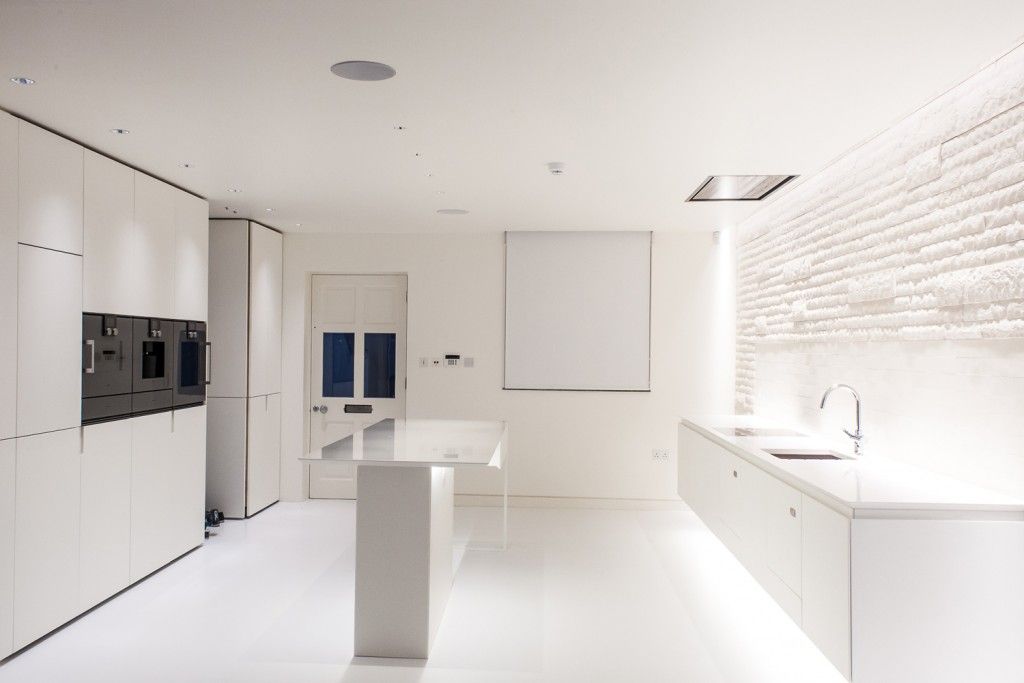The global energy landscape is in a state of upheaval, with escalating energy demands, mounting environmental concerns and an urgent call for sustainable solutions. In this pivotal moment, smart buildings are emerging as a beacon of hope, offering innovative solutions to tackle these pressing challenges head-on. By harnessing cutting-edge technologies and sophisticated automation, smart buildings are revolutionising the way we consume energy, paving the way for significant savings, reduced environmental impact, and unprecedented levels of comfort and convenience for occupants. In the heart of this transformation are companies like JSJ Smart Homes, driving the shift towards sustainable living through the implementation of smart home systems. Utilising state-of-the-art Loxone smart systems, JSJ Smart Homes is at the forefront of reducing energy consumption and promoting sustainability in residential and commercial spaces alike. Through a blend of advanced technology and strategic design, smart buildings are not only reshaping our physical environment but also redefining our relationship with energy consumption and environmental stewardship. As we delve deeper into the realm of smart buildings and their role in combating the energy crisis, it becomes clear that they represent more than just a technological advancement. They embody a paradigm shift—a fundamental reimagining of how we interact with our built environment and how we can harmonise our needs with the planet’s finite resources. Smart buildings are not just buildings; they are a testament to our commitment to a more sustainable future, offering a glimpse of what is possible when innovation meets environmental stewardship.
Renewable Energy Integration:
Energy Management Systems (EMS) are fundamental components of smart buildings, playing a pivotal role in monitoring and controlling energy consumption in real-time. In this context, JSJ Smart Homes leverages Loxone smart systems to implement advanced EMS capabilities. These systems integrate a sophisticated blend of sensors, controls, and software to optimise the operation of building systems, including lighting, heating, ventilation, and air conditioning (HVAC), ensuring maximum energy efficiency and occupant comfort. One of the primary functions of EMS is its ability to dynamically adjust lighting, heating, and cooling based on real-time data. For instance, sensors can detect occupancy levels within different building areas, allowing the system to modulate lighting and HVAC settings accordingly. During unoccupied periods, the system can dim lights or adjust temperature settings, effectively conserving energy. Furthermore, EMS can respond to external factors such as weather conditions, fine-tuning HVAC settings to optimise energy utilisation. EMS also excels in tracking and analysing energy consumption data, enabling building managers to discern patterns and trends, and make informed decisions to curtail energy waste. By identifying energy-intensive equipment and recommending efficiency improvements, EMS significantly contribute to energy savings. Additionally, EMS can seamlessly integrate with renewable energy sources and energy storage systems, further enhancing energy optimisation efforts. For instance, EMS can coordinate the use of solar panels to harness electricity during peak sunlight hours, diminishing reliance on grid power and reducing energy costs. Overall, EMS, facilitated by JSJ Smart Homes with Loxone smart systems, are indispensable in smart buildings, providing real-time monitoring and control of energy use, optimising lighting, heating, and cooling based on occupancy levels and weather conditions, and identifying opportunities for further energy efficiency improvements.
Data Analytics:
Data Analytics in smart buildings plays a pivotal role in tracking energy use, identifying inefficiencies and optimising building performance. Leveraging advanced data analytics capabilities, JSJ Smart Homes integrates Loxone smart systems to enable a comprehensive approach to energy management. These systems collect and analyse data on energy consumption from various building systems, providing valuable insights into patterns and trends. By identifying areas of high energy consumption and inefficiency, building managers can make informed decisions to reduce energy waste and improve overall efficiency. This data-driven approach empowers building managers to implement targeted strategies, such as adjusting HVAC settings or upgrading equipment, to achieve significant energy savings.
Improved Comfort:
Smart buildings, facilitated by JSJ Smart Homes with Loxone smart systems, prioritise occupant comfort by offering a more personalised and productive environment. These buildings are equipped with advanced features such as personalised lighting, which adjusts based on individual preferences and natural light levels, enhancing comfort and reducing eye strain. Additionally, smart thermostats enable precise temperature control, ensuring that occupants can create the ideal indoor climate. Moreover, smart buildings incorporate air quality monitoring systems that continuously assess indoor air quality and adjust ventilation systems accordingly, providing occupants with a healthier and more comfortable environment. Overall, smart buildings are redefining the standards of comfort and productivity, offering occupants a tailored and sustainable living experience.
Enhanced Safety and Security:
Smart buildings prioritise safety and security through advanced technologies. These buildings are equipped with state-of-the-art security systems and sensors that monitor and respond to potential threats in real-time. From surveillance cameras to motion sensors, these systems ensure the safety of occupants and assets, providing peace of mind and a secure living environment.
Increased Property Value:
The energy efficiency and sustainability features of smart buildings have significantly increased their demand in the real estate market. As a result, smart buildings command higher property values and rental rates compared to traditional buildings. The appeal of lower energy costs, improved comfort, and the ability to reduce environmental impact makes smart buildings a desirable investment for both homeowners and tenants.
In conclusion, smart buildings represent a pivotal solution in addressing the pressing energy crisis. Their integration of advanced technologies and sustainable practices not only optimises energy use but also sets a new standard for sustainable living. As global energy challenges continue to escalate, smart buildings stand out as beacons of hope, offering a tangible path towards a more sustainable and energy-efficient future. With their ability to adapt to evolving energy needs and reduce environmental impact, smart buildings are well-positioned to lead the way in creating a more sustainable and resilient energy future for generations to come.

